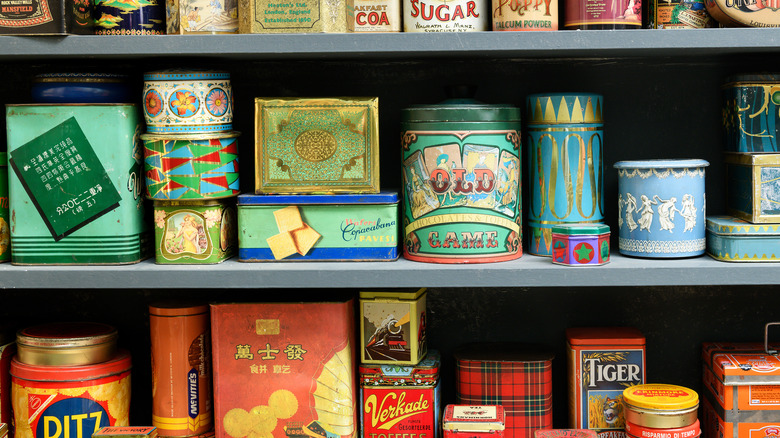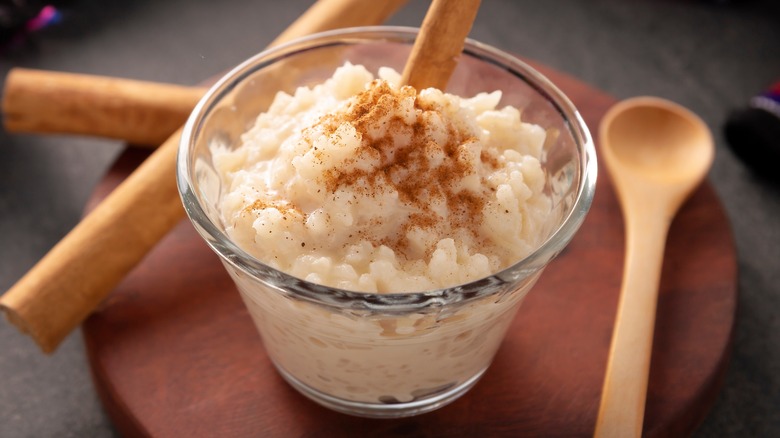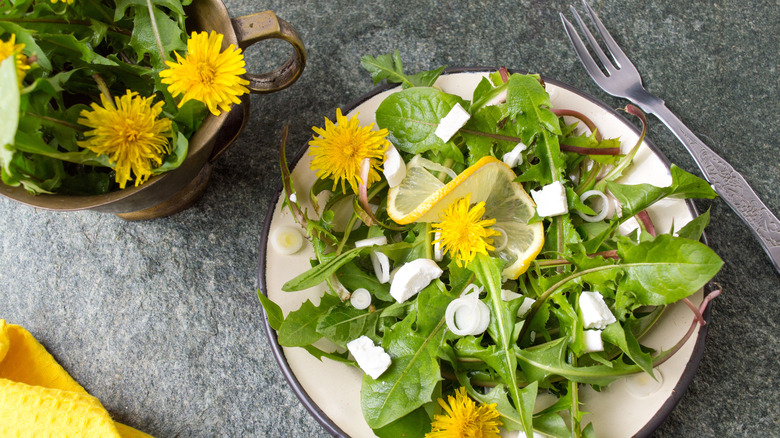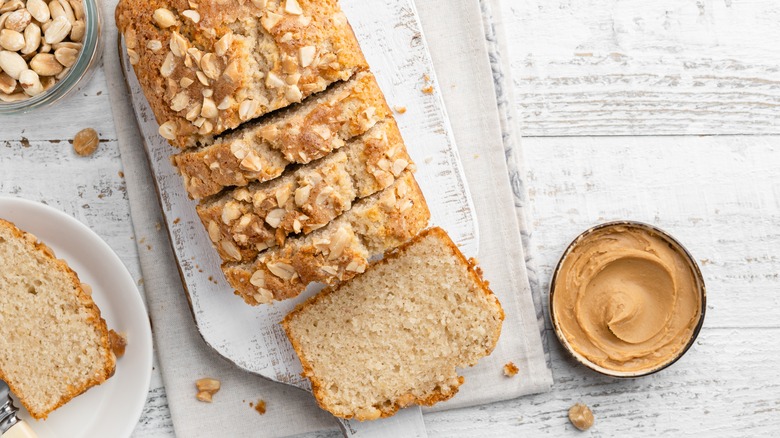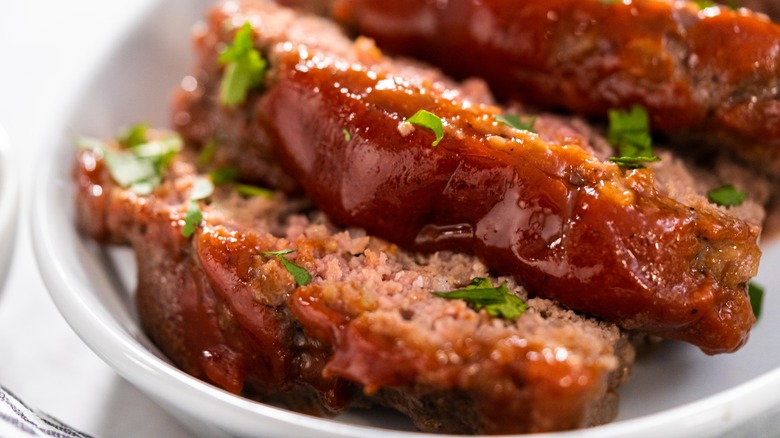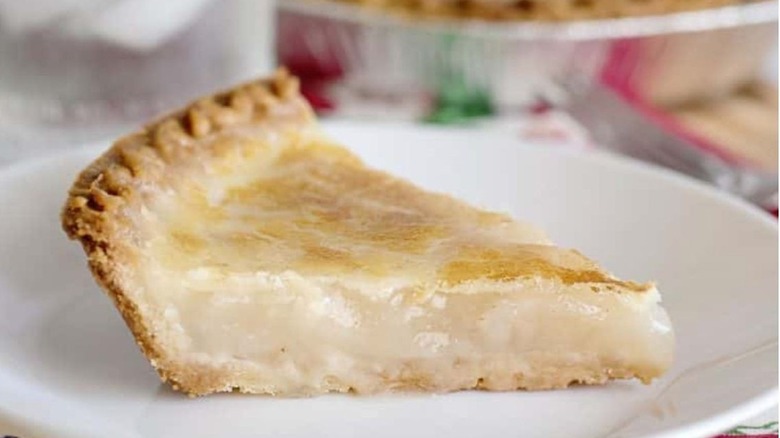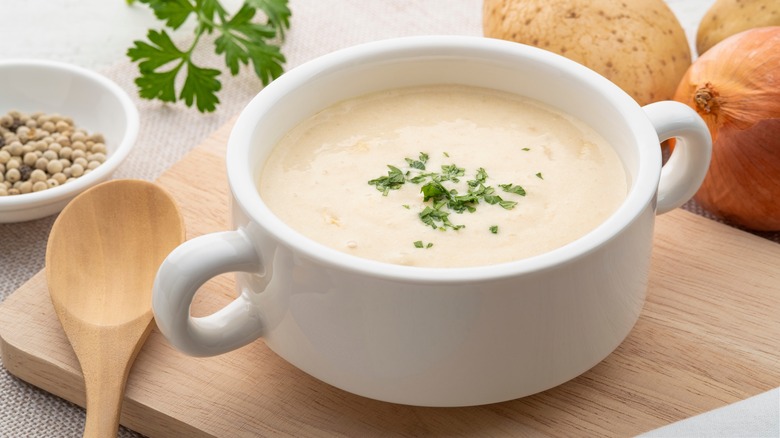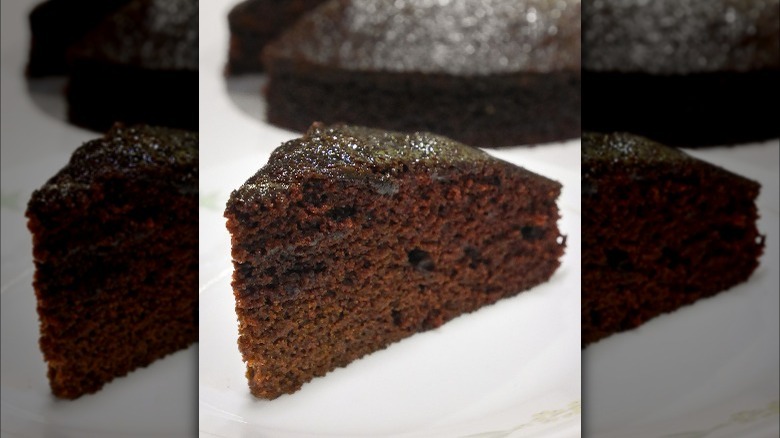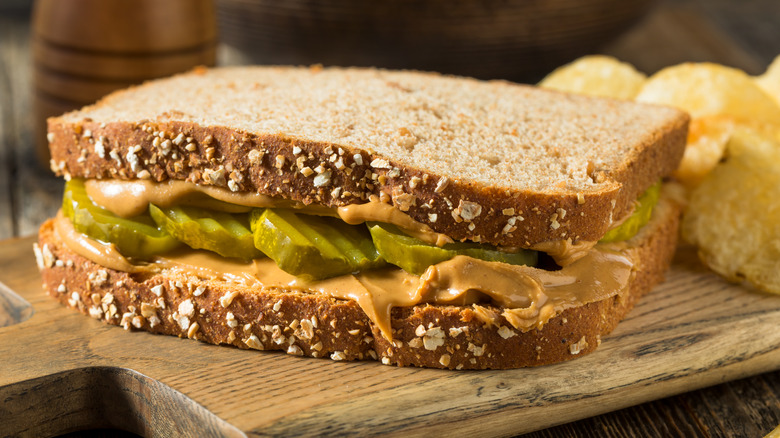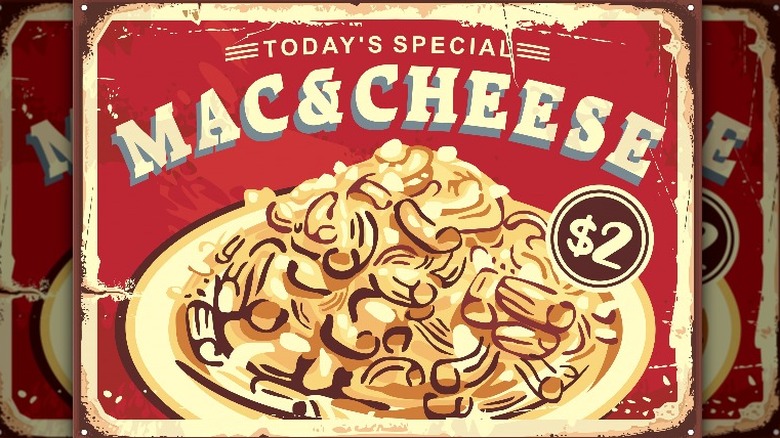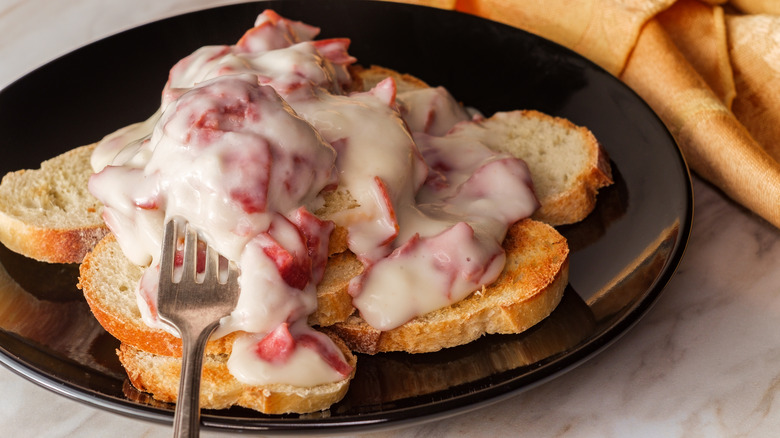Depression-Era Foods You Are About To See Everywhere
With the pandemic shortages that paralleled much of the food scarcity of the 1930s, Depression-era recipes are seeing the limelight once again. But beyond grocery restrictions and the novelty of reviving retro receipts, Depression-era cooking has largely become re-popularized through a new demographic with its arsenal of inherently vegan and vegetarian meals. The innovative alterations that defined these meals for hard times parallel today's widespread culinary substitutions to accommodate food allergies and dietary preferences.
Whether it's scarcity or novelty that's bringing these old recipes back, they persist as proof that when it comes to cooking, there is ample room to bend the rules. Here is a list of 10 Depression-era dishes that have lately returned to restaurants and dining tables. Inspired by the thrifty meal planning strategies that defined the culinary creativity born out of the Depression, and enticed by how valiantly our forebears were able to make so much from so little, contemporary cooks continue to recreate these vintage recipes.
Rice pudding
Even though people have been eating rice pudding for virtually all of recorded history, the dish found special appeal during the Depression. Rice pudding appears among the practical desserts featured in Irma Rombauer's "Joy of Cooking," a culinary how-to for all socioeconomic and culinary levels published in 1931 that became a timely resource for home cooks seeking kitchen creativity on a budget. This dish went a long way due to the filling nature of rice which could easily be enhanced with the addition of milk, sugar, and even eggs when available. The recipe is simple and could be simplified even further to accommodate a lack of luxury ingredients when the average American larder fell on hard times.
Today, when economy might not be the only available mode of kitchen operation, rice pudding's simplicity inherently invites cooks to experiment with flavor innovations. As a fairly fail-safe dish, rice pudding can also easily be altered to accommodate all manner of dietary restrictions; for instance, plant-based milk works just as well as dairy. There's also a deceptively delicious quality about rice pudding — when sweetened with honey or maple syrup, it makes a fairly health-conscious dessert.
Rice pudding's wholesome versatility may be what is bringing it back into the mainstream. Though upscale restaurants have been sprucing up this dessert with gourmet garnishes, you really can't go wrong with making it from scratch. Equally delicious served hot or cold, rice pudding's noble flavors and creamy texture suggest home comforts either way.
Dandelion salad
With scant resources and smaller incomes, it's no surprise that Depression-era households reverted to foraging when possible. Wild plants were fair game if they were edible, and locally grown weeds didn't cost a thing. Dandelion salad was a phenomenon born out of this scavenging of necessity and may have contributed to an enhanced wellbeing among those who deigned to gather their salad ingredients from the roadside. In addition to being abundant and easy to acquire, dandelion leaves also happen to have significant nutritional benefits.
Healthline states that dandelion greens provide a healthy dose of vitamins A, C, K, and E, and also contain enough antioxidants to fight inflammation. With a host of other possible health benefits currently undergoing study, dandelion greens may prove to be helpful in promoting weight loss, fighting cancer, and reducing liver damage, so it's no wonder dandelion salads have started to germinate among restaurant menus. Dandelion greens have a somewhat bitter flavor that makes them oddly palatable — not unlike arugula, they have a distinct potency of their own that provides a piquant contrast to other vegetables when served in a salad. For a boost of healthy greens, dandelion salad is even easier to make at home than it is to order from a restaurant. Whether for nutrition content or simply their unique flavor, these greens have caught on enough to become far more than mere weeds.
Peanut butter bread
Peanut butter is one of the pantry staples that found favor in American households because it was a cheap source of protein with a high calorie content. Consequently, peanut butter became much more than an effective sandwich filling and found its way into many recipes that embraced the spread's versatility.
Peanut butter bread, which requires just a few ingredients, appeared much earlier than the 30s, suggesting this recipe has consistently been a hearty fallback for tight times. It first became relatively mainstream during WWI, when the "Win the War in the Kitchen" cookbook urged home front cooks to prioritize alternative ingredients in order to save kitchen necessities like butter, milk, and eggs. But considering such baking could come together successfully without any of these kitchen staples, the true definition of cooking necessities has started to pivot — as it turns out, peanut butter can replace butter quite effectively in many recipes.
The half cup or so of peanut butter that goes into this recipe ensures a bread that is moist with a sweet, nutty flavor. Whether adding chocolate chips to make it a dessert or simply keeping it as a novelty sandwich base, peanut butter bread rises without any yeast, which greatly appeals to today's bakers. This may have an added draw for those who are new to bread-baking, as this loaf yields satisfying results without much hassle and provides quick gratification from a simple mix of pantry staples that are usually on hand.
Meatloaf
Though many cultures have been making similar dishes for thousands of years, meatloaf is one of the more widely consumed meals that first made its mark during The Great Depression. Mixing a bit of ground meat with grains effectively stretched a meager portion of meat, transforming meatloaf into a Depression staple. But there were plenty of households that didn't have the means for even meatloaf during the 1930s. This prompted resourceful home cooks to craft meatless meatloaves that more or less resembled the real thing, although they didn't quite taste the same. Opting for nuts or legumes as part of the mixture, these vegetarian meatloaves were still a filling source of protein — yet another prototype for the intentionally meatless meatloaves that have sprung up as today's vegan and vegetarian novelties.
The meatloaf that's making a comeback, however, is most assuredly the carnivorous variety. A humble, unassuming dish with great potential for versatility, there was no reason for meatloaf to ever really lose popularity after its Depression-era zenith. It has become beloved enough to be enjoyed outside of hard times and has long since transcended fad status after a resurgence in the 50s. But perhaps meatloaf is gaining popularity yet again on account of the recent culinary impetus to transform comfort foods into gourmet dishes. Meatloaf is making recurring appearances on upscale restaurant menus, a complete shift from the economic uncertainty that initially boosted this dish's popularity.
Water pie
Also known as "hard times pie," this recipe could be the poster child for Depression-era resourcefulness. Consisting of merely four ingredients (water, flour, sugar, and salt, plus a little vanilla if it's on hand), the fact that someone ever dreamed this up is as commendable as the dessert's surprisingly tasty outcome. The flour and butter create just enough starch to form a custardy consistency when cooked with water, and though lacking any distinctive flavor, the dessert is plenty sweet. To its credit, though most people tend to associate this pie solely with the hard times of the 1930s, water pie's outcome is somewhat like sugar pie (aka "tarte au sucre"), a centuries-old Belgian-Franco-Quebecois confection that is more dearly beloved probably because it uses milk instead of water and also indulges in the addition of eggs.
With today's inflation keeping the price of eggs and butter high, water pie might have a good enough reason to make a comeback in the present economic climate. But water pie's renewed popularity seems to be born mostly out of an influx of TikTokers and YouTubers trying out this vintage recipe. For those that don't mind a sweet, neutral flavor, water pie may continue to stick around; it is a simple dessert that makes for a good conversation piece.
Potato soup
Potatoes, bought cheaply in bulk, were another Depression-era staple, and were incorporated into all manner of dishes to spread meals far enough to keep families full. Fortunately, potatoes pair well with most things, and are just as good on their own. Potato soup is no exception to the Depression-era approach to cooking with only a few ingredients. While a soup made from mostly potatoes may not sound like it has special culinary appeal, the dish was well-loved in the 1930s and is experiencing a moment again today.
A pottage that can be made in its simplest form from broth, potatoes, and maybe a little milk, potato soup is yet another example of simple, wholesome fare that welcomes culinary creativity. For today's era in which simplicity seems to be perennially trending when it comes to home cooking, recipes for potato soup have found an especially receptive audience on TikTok where creative cooks have emphasized how easy it is to make this simple dish which can yield incredibly delicious results. Whether left to cook in a crockpot or simmered on the stove, potato soup has been consistently on an upward trend, finding the most favor among vegan eaters. More decadent variations, however, don't skimp on mixing in heavy cream or sprinkling bacon on top.
Wacky cake
Called "wacky cake" for its unconventional ingredients, this surprisingly decadent chocolate dessert is another chemistry phenomenon that requires no milk, eggs, or butter. Instead, this cake gets its moisture from oil. The component that helps the whole thing rise is the addition of vinegar, which reacts with baking soda and transforms into a bubbly fizz that converts the batter into a fluffy, moist, and perfectly believable cake.
Though this was likely not the wacky cake's intention, it served as a pioneer of vegan baking and proved that a little kitchen science and creative intuition can go a long way. When the hankering for chocolate strikes, many of today's zealous vegan bakers have been baking wacky cake recipes without realizing it — vinegar is a common leavening agent in plant-based baking that also helps enhance overall flavor.
Because it's a lot more common today to substitute ingredients in baking recipes, this is a unique culinary moment well-suited to welcoming the wacky cake back into the fold. But this chocolatey Depression-era recipe has also achieved a sense of timelessness through another influx of influencer bakers on social media touting the merits of retro recipes. This highly adaptable cake is well-suited to all manner of modifications — for example, any kind of oil works equally well. When this chocolate cake's outcome is no less delicious for being made from healthier and significantly cheaper ingredients, wacky cake has begun to redefine which baking necessities should be kept on hand.
Peanut butter and pickle sandwiches
The PB & P first appeared at lunch counters during the Depression, but while many diners enjoyed them, the combo has never really gone mainstream. It is largely a sense of curiosity that has convinced today's intrepid tastebuds to try the PB & P, though it may soon reach broader appeal.
But getting the right pickle variety is important when making this otherwise simple sandwich. Dill pickles are too briney to make this combination work – bread-and-butter pickles mix best with peanut butter due to their tangy sweetness. This unusual pairing, as it turns out, may itself be a variation on a variation.
Another sandwich with mythic Depression-era origins is the bread-and-butter pickle sandwich, which, true to its name, consists of pickles between two slices of buttered bread (perhaps that's how sweet and sour pickles got their colloquial name). But the butter-pickle filling may in fact be a hard times version of the more widely accepted cucumber sandwich — a British teatime staple consisting of nothing more than sliced cucumber between bread slices spread with butter or mayonnaise. Thus, by the culinary transitive property, peanut butter and pickles might not be such a strange combination after all. At the very least, few snacks have the convenience aspect of a ready-made meal with ingredients that are almost guaranteed to be in the kitchen.
Mac and cheese
Mac and cheese hasn't ever really gone out of style — and why would it? — but it has been making a comeback in a new way. Though macaroni and cheese has roots in 18th century Europe and was popularized during the early days of U.S. history by founding father Thomas Jefferson, the dish really reached nationwide popularity as an American staple during the height of the Depression. In 1937, Kraft introduced its boxed mac 'n' cheese, which was enticingly affordable and all too easy to make. When one box of Kraft Dinner made four servings for a mere 19 cents, macaroni boxes filled pantry shelves across America, and have remained in ample supply within arm's reach ever since.
With boxed mac 'n' cheese as the default for a macaroni meal, this cheesy noodle norm has persisted for more than 80 years. But even though ease and simplicity are still the guiding forces in the contemporary kitchens of busy households, a cultural craving for homemade meals has returned. Rather than remaining a fallback for a quick lunch or dinner, mac 'n' cheese is taking front and center, largely due to mainstream kitchen appliances that have made home-cooked meals almost as hands-free as instant ones. The recent Instant Pot revolution has contributed to a surge in home cooking, leading to many variations on mac and cheese, with recipes that call for only a handful of ingredients but still conjure that beloved homemade taste that speaks to the soul.
Creamed chipped beef on toast
While it was more a food of necessity than preference for the soldiers on the front lines of WWI and WWII, chipped beef on toast was a welcome meat source for hungry families during the interwar years. Chipped beef, which comes in the form of thin dried and salted slices, was a cheap, shelf-stable meat option, but required soaking to become soft enough to be palatable. Enter the milky white gravy that has become the beef's steadfast companion — pouring this white sauce over the beef and putting the whole thing on toast turned it into a substantial form of sustenance.
Milk-based sauces were a common Depression condiment whenever milk was available — they added flavor and calories to bolster many meals. Whether this saucy dish was truly beloved in the past, it persists on diner menus, peppered with nostalgia. While creamed chipped beef on toast has remained a classic comfort food in the South and along parts of the East coast (where many call it "Dried Beef Gravy" or "Frizzled Beef"), it has started to pique enough curiosity to catch on again elsewhere, too. A surplus of internet recipes for chipped beef on toast have appeared in recent years, though there isn't much room for variation with this simple, savory amalgamation. With such a colorful history behind such an easy dish, its heritage alone is enough to prompt more people to try it. It's supposed to taste a lot better than it looks.
